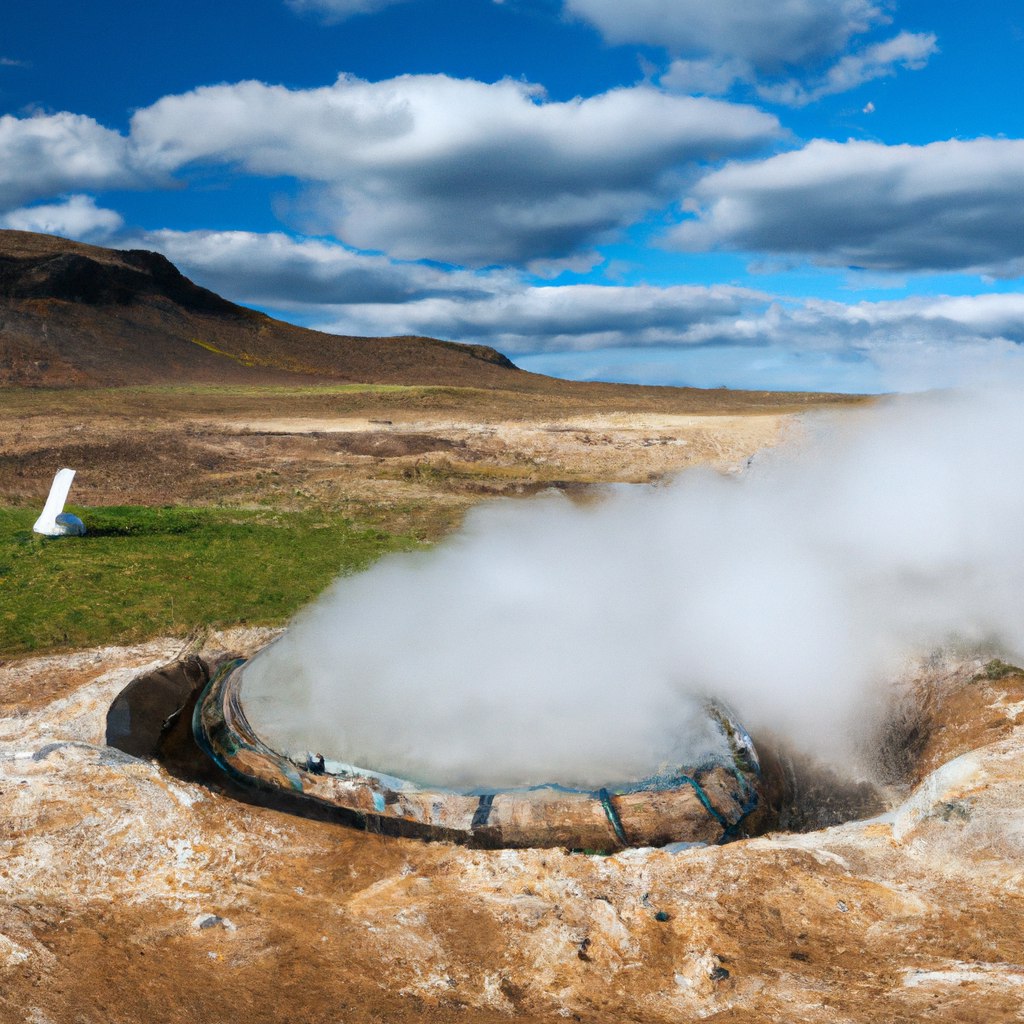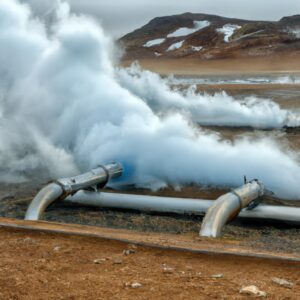
Geothermal energy, an ancient power source harnessed for thousands of years, is now gaining prominence as a key player in the global transition to cleaner, renewable energy. This remarkable energy form utilizes the Earth’s natural heat generated within the depths of its crust, offering a sustainable and environment-friendly alternative to traditional fossil fuels. As our society becomes increasingly aware of the urgent need to address climate change, geothermal energy emerges as a critical solution with the potential to power our world while significantly reducing greenhouse gas emissions.
The Origins of Geothermal Energy
The story of geothermal energy begins with the birth of our planet billions of years ago. As the Earth coalesced from cosmic dust and debris, the immense gravitational forces generated an unimaginable amount of heat. Over time, this heat has been preserved within the Earth’s core and mantle, forming an enduring source of energy that continuously radiates towards the surface.
Central to geothermal energy is the process of radioactive decay. Within the Earth’s core, radioactive isotopes, such as uranium, thorium, and potassium, undergo spontaneous decay, releasing a tremendous amount of heat. This heat transfer is the driving force behind volcanic activity, plate tectonics, and seismic events that shape our planet’s dynamic surface. By tapping into this process, humanity has unlocked an invaluable resource capable of providing clean and renewable power.
The history of geothermal energy utilization dates back to ancient civilizations, where hot springs and natural geothermal reservoirs were recognized for their therapeutic and practical benefits. The Romans and Greeks, among others, ingeniously incorporated geothermal energy into their daily lives, using hot springs for heating, bathing, and even as sources of religious significance.
Direct Use Applications
In contemporary times, we have developed sophisticated methods to harness geothermal energy. Direct use applications involve tapping into natural hot springs and subsurface geothermal reservoirs to utilize the hot water and steam directly for various purposes. From heating buildings and greenhouses to providing warm water for spas and industrial processes, direct use systems are employed in numerous regions worldwide where geothermal resources are accessible.
The pinnacle of geothermal energy’s potential lies in its ability to generate electricity. Geothermal power plants are at the forefront of this endeavor, leveraging the Earth’s heat to produce a consistent and reliable source of renewable electricity.
Dry Steam Power Plants: In this type of plant, steam directly from the geothermal reservoir is used to drive turbines and generate electricity. Countries with abundant geothermal resources, like Iceland and New Zealand, have extensively deployed dry steam power plants to power their grids sustainably.
Flash Steam Power Plants: These plants utilize high-pressure hot water from geothermal reservoirs to produce steam. The generated steam powers the turbines, converting mechanical energy into electricity. Flash steam power plants are prevalent in regions with slightly lower temperature reservoirs than those required for dry steam plants.
Binary Cycle Power Plants: This innovative type of geothermal power plant operates at lower temperatures than dry steam and flash steam plants. Instead of directly using the hot water or steam, binary cycle plants employ a secondary fluid with a lower boiling point. The geothermal fluid heats the secondary fluid, which then vaporizes, driving the turbines to generate electricity. Binary cycle power plants have expanded the accessibility of geothermal energy to regions with moderate geothermal resources.
Geothermal Heat Pumps: Efficient Heating and Cooling
Geothermal heat pumps, also known as ground-source heat pumps, revolutionize the way we heat and cool buildings. Unlike conventional air-source heat pumps, which rely on external air temperatures, geothermal heat pumps draw upon the Earth’s constant temperature just below the surface. This consistent heat source makes them highly efficient and reliable, significantly reducing energy consumption for heating and cooling purposes. By integrating geothermal heat pumps into homes, businesses, and institutions, we can make substantial strides towards energy efficiency and a greener future.
Global Distribution of Geothermal Resources
Geothermal energy resources are not evenly distributed across the globe. They are most abundant in areas with high tectonic activity, such as volcanic regions and tectonic plate boundaries. Countries located along the Pacific Ring of Fire, including Indonesia, Mexico, and the United States, boast substantial geothermal resources and have been early adopters of geothermal energy.
However, advancements in technology have sparked a new era of geothermal energy exploration. Enhanced Geothermal Systems (EGS) or engineered geothermal systems have the potential to revolutionize geothermal energy accessibility. By creating engineered reservoirs in regions where natural geothermal resources are scarce, EGS extends the reach of geothermal energy to previously untapped territories, unlocking its potential on a global scale.
Environmental Benefits of Geothermal Energy
 One of the most significant advantages of geothermal energy lies in its low environmental impact compared to traditional fossil fuel-based power generation. Geothermal power plants emit minimal greenhouse gases, making them a clean and sustainable alternative. They produce nearly no carbon dioxide (CO2), sulfur dioxide (SO2), or nitrogen oxides (NOx), which are primary contributors to air pollution and global warming.
One of the most significant advantages of geothermal energy lies in its low environmental impact compared to traditional fossil fuel-based power generation. Geothermal power plants emit minimal greenhouse gases, making them a clean and sustainable alternative. They produce nearly no carbon dioxide (CO2), sulfur dioxide (SO2), or nitrogen oxides (NOx), which are primary contributors to air pollution and global warming.
Furthermore, the water used in geothermal power plants can often be reinjected into the geothermal reservoir, making the process sustainable and minimizing water consumption. Geothermal power plants have a relatively small land footprint compared to other renewable energy sources like solar or wind farms, preserving valuable land for other purposes.
Despite its numerous benefits, geothermal energy faces certain challenges and limitations. Its geographical restriction to regions with suitable geological conditions remains a significant obstacle. Many areas around the world lack access to substantial geothermal resources, hindering the widespread adoption of this energy source.
The exploration and drilling processes required to tap into geothermal reservoirs can also be costly and carry environmental risks, including potential seismic activity if not managed meticulously. Additionally, the high initial costs of building geothermal power plants can be a barrier to entry for developing countries or regions with limited financial resources.
However, as we forge ahead toward a more sustainable energy future, geothermal energy is poised to play an increasingly vital role. Technological advancements and ongoing research into Enhanced Geothermal Systems (EGS) will likely expand the reach of geothermal resources, making them accessible in more regions worldwide.
The integration of geothermal heat pumps into buildings and urban infrastructure will significantly reduce carbon footprints and energy consumption for heating and cooling purposes. Furthermore, the development of flexible and modular geothermal power plants, capable of adjusting output based on demand, will enhance the stability and reliability of electricity grids, complementing intermittent renewable sources like solar and wind.
To accelerate the adoption of geothermal energy, government incentives, favorable policies, and public support for renewable energy are crucial. International cooperation and knowledge-sharing can further promote the deployment of geothermal technology in regions where it remains largely untapped, contributing to a cleaner and greener energy future for the entire planet.
